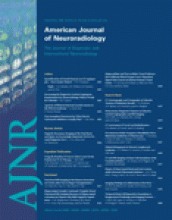Abstract
BACKGROUND AND PURPOSE: Current MR imaging criteria for multiple sclerosis (MS) do not specify the magnetic field strength. The aim of this study was to investigate whether different MR imaging field strengths, specifically high-field MR imaging, have an impact on the classification of patients with clinically isolated syndromes suggestive of MS, according to MR imaging and diagnostic criteria.
METHODS: In a prospective intraindividual comparative study, we examined 40 patients with clinically isolated syndromes (CIS) consecutively with a 1.5T and 3T MR imaging system, including axial sections of T2 turbo spin-echo, fluid-attenuated inversion recovery, and T1 spin-echo, before and after injection of gadolinium-diethylene-triaminepentaacetic acid. Constant resolution parameters were used for both field strengths. High-signal-intensity white matter lesions with a size of >3 mm were counted and categorized according to their anatomic location in infratentorial, callosal, juxtacortical, periventricular, and other white matter areas. Assessment of the fulfilled Barkhof MR imaging and McDonald diagnostic criteria was made separately for both field strengths in every patient.
RESULTS: Eleven patients fulfilled more MR imaging criteria at 3T. Two of these patients fulfilled the criterion of dissemination in space (DIS) according to the first definition of McDonald criteria, which is based on imaging criteria alone. Another patient had DIS only at 3T, according to the second definition of the McDonald criteria including CSF parameters.
CONCLUSION: MR field strength, specifically high-field MR imaging, has a substantial influence on the classification of patients with CIS according to imaging and a mild influence on the classification according diagnostic criteria for MS, leading to consequences for prognostic classification, imaging guidelines, and clinical trials.
- Copyright © American Society of Neuroradiology











